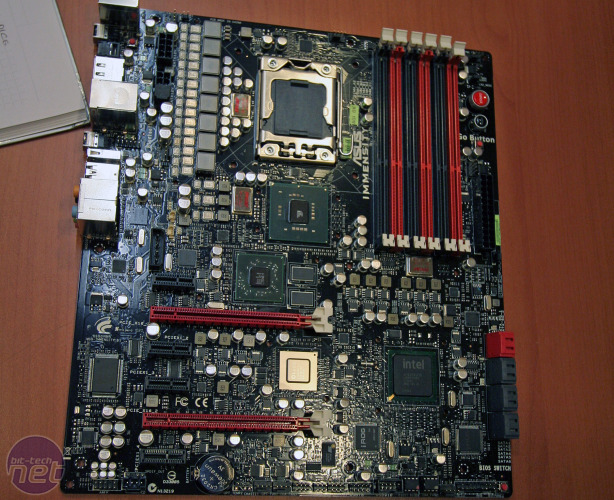
Diving Deeper into the Immensity
Like the lucky folk we are, we also got some time with Andrew Wu, the Product Manager of Asus' Immensity motherboard. First sighted at Computex 2010, this is a cracking (or, crackpot, depending on how you look at it) concept motherboard that melds a high performance X58 motherboard with a GPU and a multi-GPU chip - all on a single board.In our first look, we already looked at why this board exists, but we wanted to get down and dirty with the technical side, because there's more to this board than a CPU, a GPU and the Lucid Hydra.
Firstly we were informed of the scale of design that went into the Immensity - it uses a whopping 10 layer PCB. It's only if you really run out of room, for traces that you have to add another layer - extra PCB layers cost a lot, especially for an ATX size board. It also adds complication to the whole design process because it affects the placement of the surface components as well as crucial factors such as signal integrity and overclocking.
Performance motherboards - even high-end models - typically use only six layer PCBs, whereas budget boards often make do with just four. In fact, Asus has only made one commercial board with more layers - 12 - and that was the P5K3 Premium. Asus dropped a cunning little tit-bit about its boards too - you can tell how many PCB layers any of them have by turning the board over and reading off the little number in the corner. Good to know!
While Gigabyte markets its 2oz copper PCBs heavily, Asus claims the extra ounce does little for power and PCB temperature - citing just a two per cent benefit in certain cases. Even so, it still uses it on all its high-end boards. The negative opinion to 2oz copper PCBs is actually echoed by MSI as well, who also claim a similar 1-2 per cent benefit at best and have told us it's use is predominantly only for marketing - MSI claims it's not actually worth the cost at all.
Around the CPU socket, Asus has finally adopted a combination PWM system with the latest DirectFET hardware available. Asus explained that previous Voltera power hardware ran too hot and this was because of the serial nature of the design: the signal generator had to fire through the phases from top to bottom in succession, which means it required a high frequency to achieve a fast enough response, with enough voltage and power to keep up with the CPUs demands.

MSI MPG Velox 100R Chassis Review
October 14 2021 | 15:04









Want to comment? Please log in.